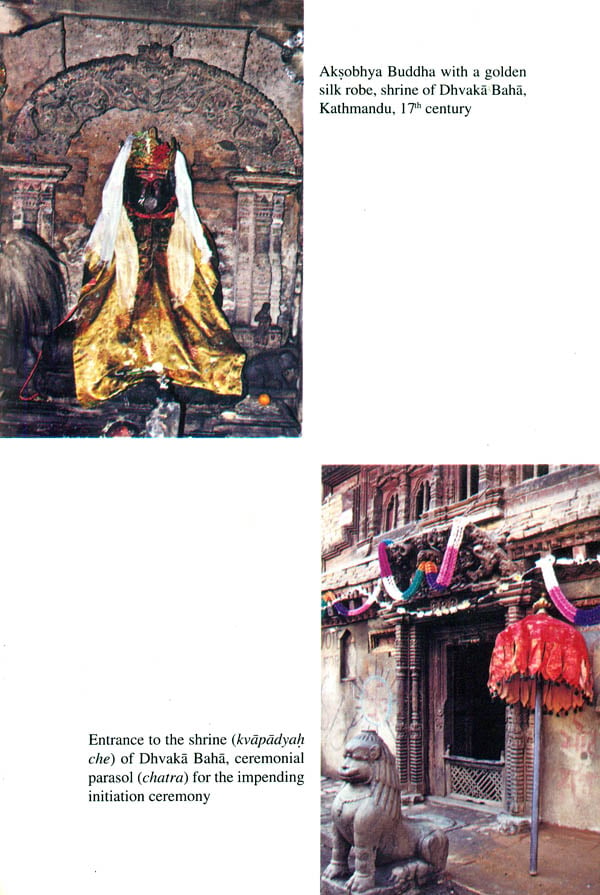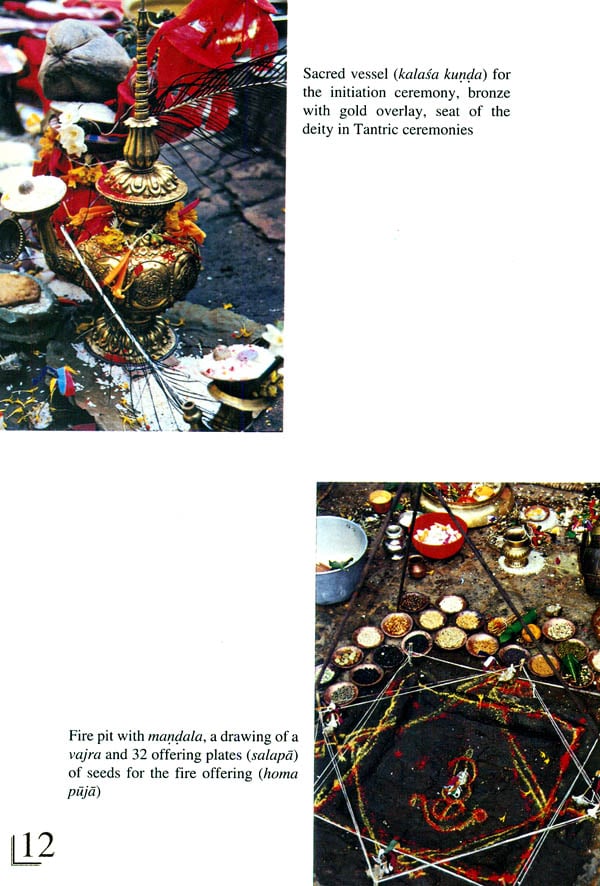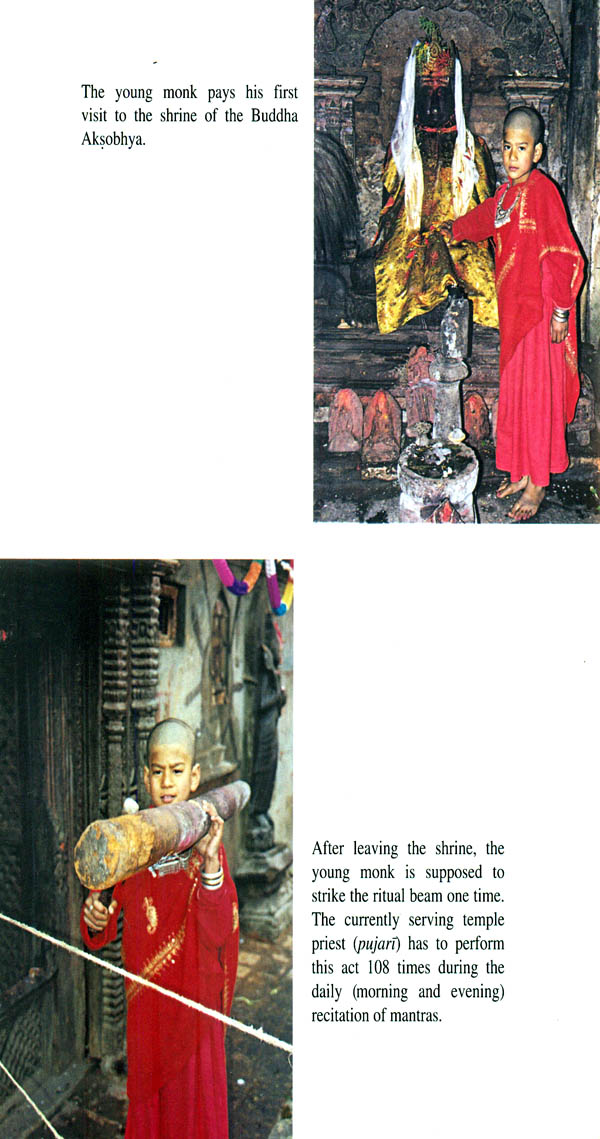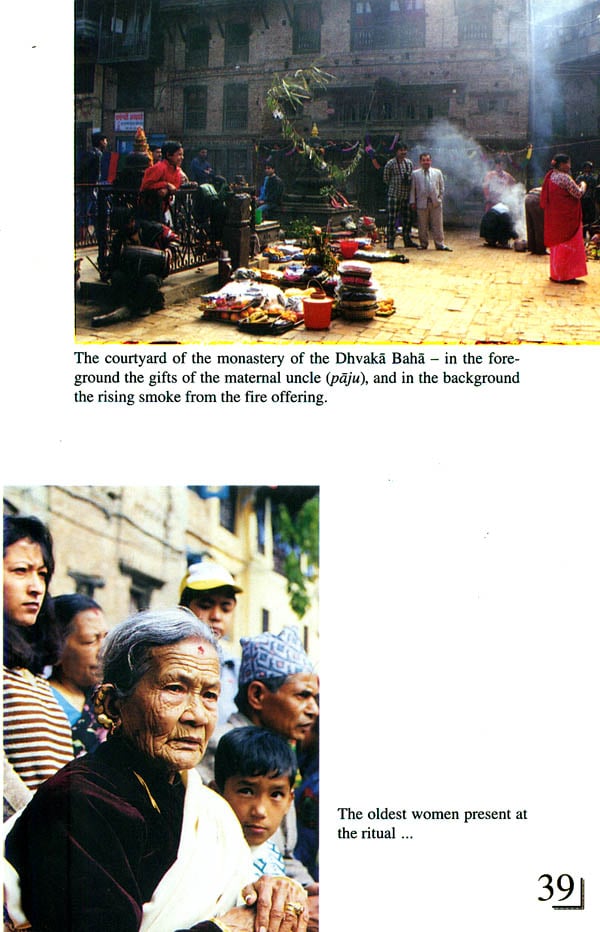
Buddhist Initiation of The Newars in Nepal a Documentation in Pictures
Book Specification
| Item Code: | NAM711 |
| Author: | Michael Muhlich |
| Publisher: | Lumbini International Research Institute, Nepal |
| Language: | English |
| Edition: | 2004 |
| ISBN: | 9789994693301 |
| Pages: | 50 (Throughout Color Illustrations) |
| Cover: | Paperback |
| Other Details | 8.0 inch x 5.5 inch |
| Weight | 110 gm |
Book Description
This exhibition and its catalogue document the Buddhist initiation of the Newar Vajracaryas in Kathmandu. The documented ritual, called bare chuyegu, was held in the monastery courtyard of Dhvaka Baha, on the day of Sri Pancami in January 1998. The sequence of the pictures provides an impression of the initiation ritual stretching over a full day. What is particular remarkable to the initiation ceremonies of Vajracaryas in Kathmandu is their open visibility to the audience. This may not be witnessed in other cities of the Kathmandu Valley. The enactment of the ritual recalls in public traditions that have been related to the first steps of Buddhas life. It also introduces to the audience traditional relations between the sangha, the lay community and the king. In this regard I would like to point out some aspects of this ritual and its documentation.
Ties of trust, mutual support, and traditional hierarchy are sustained and recalled by rituals, which reflects on their importance beyond religion and for their providing a guidance for everyday life. Thus, besides the offerings made to the gods and the deities of nature, one will witness in the pictures of this exhibition gifts of money and other items, given as gifts of charity, as gifts or as remuneration for ritual services.
The documentation of the ritual also shows the three-fold structure of rites de passages. In the first part of the ritual the initiates are separated from their former ordinary life. They are ritually purified and guided to conduct rituals that they later are expected to conduct by themselves. In the second part, they are aggregated into a luminal state: by receiving the first tonsure they are distinguished from ordinary life, but they still retain the sacred tuft of hair at the fontanel, which ex- presses their high-caste status. By undergoing the second tonsure, this sacred tuft of hair is cut off by the priest. This recalls the original act of the Buddha Sakyamuni who cut off his hair to renounce his high caste when leaving his home. In the third part of the ritual the initiates are incorporated into their new stage of life as members of the sangha. They receive new clothes and the sacred attributes of scepter, alms bowl and the auspicious sign of svastika. On "seven steps" they are guided towards the shrine of their monastery and enter it for a first time. Finally, their new status must be announced in public: so they are led in a procession to the former palace of the king, where they give as a final act of this day an areca-nut and coins as reverence to the seat of the king.
The reader with a deeper interest in the embeddedness of this initiation ritual in a prolonged ritual process of admission to the community of Vajracarya priests and their relation to the Buddhist laity may refer to a selection of researchers' contributions whose references are annexed at the end of the text portion in the bibliography.
With these few words I would like to end my introduction and I want to express my gratitude to all those who helped me in setting up this exhibition, which for a first time was shown in October 1998 in the Nepal Art Council (Babar Mahal Chowk) in Kathmandu. My gratitude is due to Mr. Aishwarya Dhar Sharma and Mr. Philip Pierce of the Nepal Research Centre, Kathmandu, who helped me in translation and transcribing from Newari, and most to Mr. Yadiratna Vajracharya, member of the Dhvaka Baha and Chusya Baha in Kathmandu, who helped me in my research and in the documentation of this exhibition.
For the honor to show the pictures to a wider public again at the auspicious place of Lumbini, I would like to express my gratitude to the Reiyukai Foundation of Japan and to Steering Committee of the Lumbini International Research Institute.
| Preparations of the Initiation Ceremony |
| Beginning of the Ceremony |
| Main Ceremony |
| Concluding Ceremonies |
| Procession |









